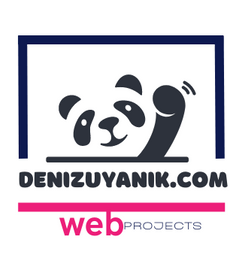KNOW THE MAIN ORTHOPEDIC PROBLEMS OF HORSES
- Pınar Horse Safari

- Dec 15, 2022
- 4 min read
Orthopedic problems are more recurrent than you might think in horses , especially those who are dedicated to athletic activities. Many owners are taken by surprise by the problem because it can have different origins, such as a nutrient-deficient diet, overload of the limbs and even genetic issues.
If you are concerned about maintaining the orthopedic health of your horses , keep reading and learn more about the main problems of this nature that can affect horses. We explain about health complications, as well as their main triggering factors.

Main orthopedic problems of horses
Below we list the main orthopedic problems that affect horses and whose origin can often be linked to a nutrient-deficient diet. Maintaining control over animal nutrition is essential for those who want to always have healthy animals. Remember that only healthy animals perform well in their job functions.
Subchondral Bone Cyst
Although it is very common in the femorotibiapatellar joint, it can manifest in other cystic structures in the animal's body. Usually, cysts form in places where weight bearing is concentrated.
Experts still do not fully understand what causes the disease, but suggest that the main triggering factors are trauma to the cartilage and costochondritis lesions (read below).
Angular Deformity of the Limbs
This disease is characterized by defects in the skeleton of the animal, there is a lateral or medial deviation in some bones. The condition can be congenital or acquired, in which case it happens in the horse's neonatal life.
Among the factors identified as triggering are hypothyroidism, defects in ossification, poor positioning in the uterus, trauma or malformation. In most cases, both the front and hind limbs are affected by the disease.
Costochondritis Dissecans (OCD)
This is a metabolic disease that affects the maintenance of cartilage and endochondral ossification in the animal. The most important thing to know about OCD is that it can lead to the development of a range of joint and bone problems.
Among the main factors that can trigger this condition are the animal's poor nutrition, lack of balance in the minerals consumed in its diet, excessively accelerated growth and cartilage trauma.
Although science has not yet proven it, it is quite possible that there is a genetic factor involved in the development of this condition. Animals from fast-growing strains are more likely to have OCD.
Tendon contracture
This condition can be both congenital and acquired and is characterized by disorders of the flexor tendon along with changes in posture and weakness. The causes identified as most influential in the development of this disease are poor positioning of the fetus in the uterus, genetic problems, as well as the presence of embryonic toxins.
The disease is characterized by posture changes in horses, as well as their weakness. The pain caused by the disease can originate from problems such as physitis, tissue damage, infections and even chronic osteoarthritis. One way to offer more comfort to the animal, with reduced pain, is through the reflex removal of the limb or the shortening of the musculotendinous units.
In some cases, the triggering factor is a deficient diet of some nutrients that affect bone growth. In these cases, it is essential that separate care is carried out focusing on resolving this issue.
Malformation of the Cervical Vertebra (“Woobler Syndrome”)
A very severe disease that affects horses through compression of the spinal cord and also through neurological dysfunction. Factors that may contribute to the appearance of this complication are osteochondriatic lesions on joint surfaces, such as the carpus of the vertebra, as well as cervical vertebral malformation.
Breeders observe the first symptoms between 6 months and 5 years of age in horses. Monitoring by a specialist is essential, and the result of the disease is focal compressive myelopathy.
Physitis (Epiphysitis)
The nomenclature Physitis refers to osteochondrosis of growth of the metaphyseal disc, which is renamed Epiphysitis when it affects the growth of certain long bones in horses that are still young.
Among the main factors that can trigger this problem are poor nutrition, hoof growth problems, growth disc compression process, as well as impaired fetal positioning.
Nutritional factors and their role in orthopedic problems in horses
Nutritional factors are closely related to the development of orthopedic diseases in horses. In general, the condition also includes metabolic problems in the bones that can lead to a series of deformities. Complications usually manifest themselves between birth and 18 months of age of the horse.
These clinical manifestations are reflected in the growth of the skeletal system that cannot withstand stress. Nutritional imbalance (excess or lack) of nutrients severely affects the health of bones and cartilage in horses. Problems stem from changes in the availability of components of the skeletal structure or even hormones and enzymes.
The nutritional monitoring of horses must be done by a veterinarian, observing the needs that each animal has. Feeding needs to be balanced according to signs of improvement or worsening of your horse's health conditions.
It is important to emphasize that, in addition to the nutritional factor, there are two more factors that deserve special attention, genetics (conformation) and environment (traumas and exercises that generate too much effort). In order for your horses to remain healthy, all spheres must be considered and analysed.
Veterinary Monitoring
To make sure that your horses are in perfect health, constant veterinary monitoring is essential. When noticing something different, it is essential that the specialist requests a veterinary X-ray. Only with this exam in hand will the professional be able to find out if there is an orthopedic problem.
In addition to being very difficult for the animal to live with the pain, it is essential to start the treatment of possible illnesses as soon as possible so that there is a chance of solving the problem. Owners of horses, whether for competitions or to help with work in the field, must pay close attention to the orthopedic health of their animals.
Did you visit Campervan Turkey?











Comments